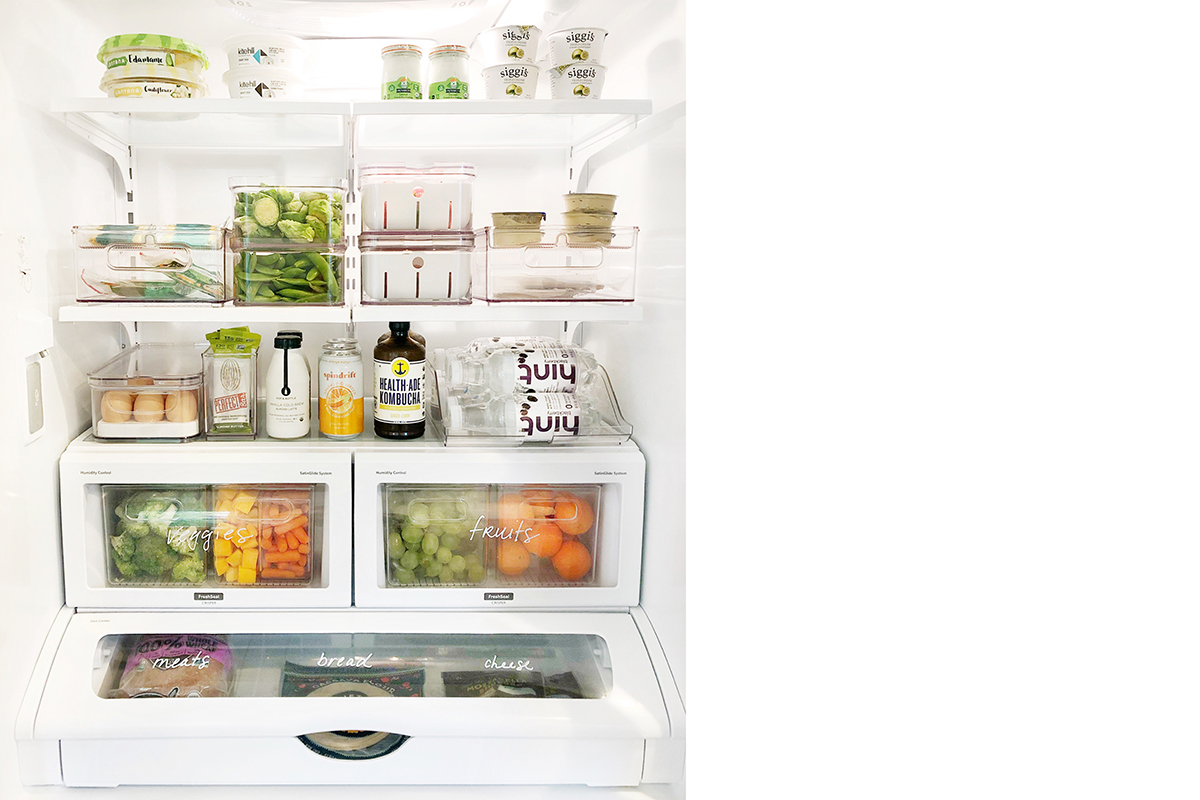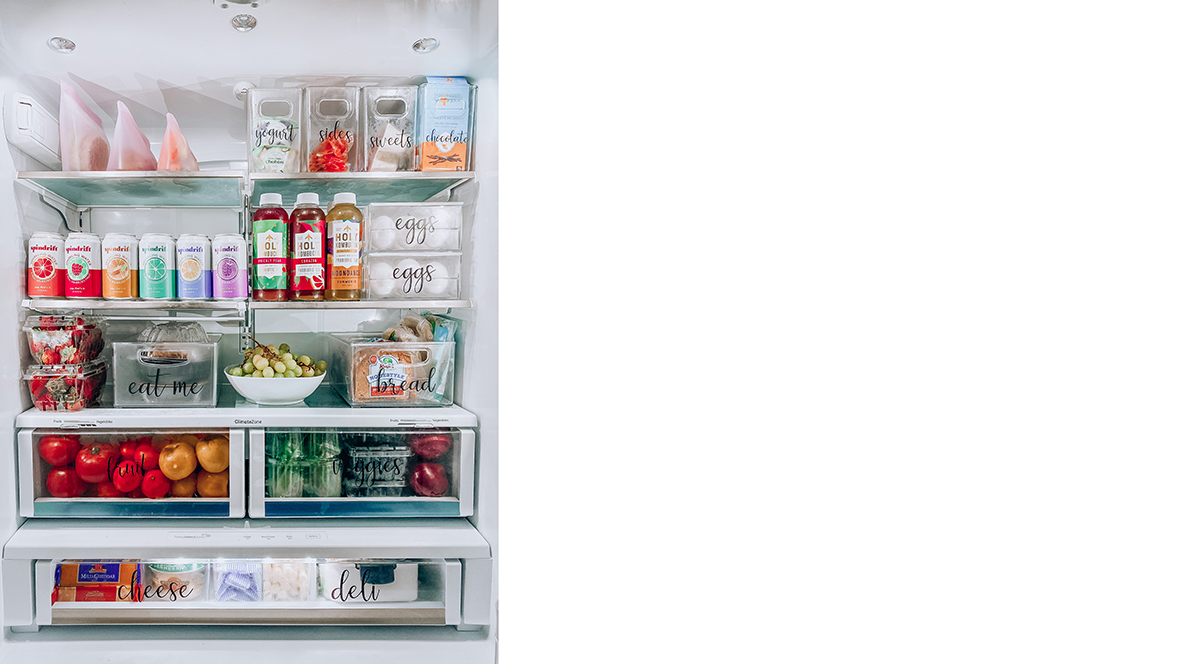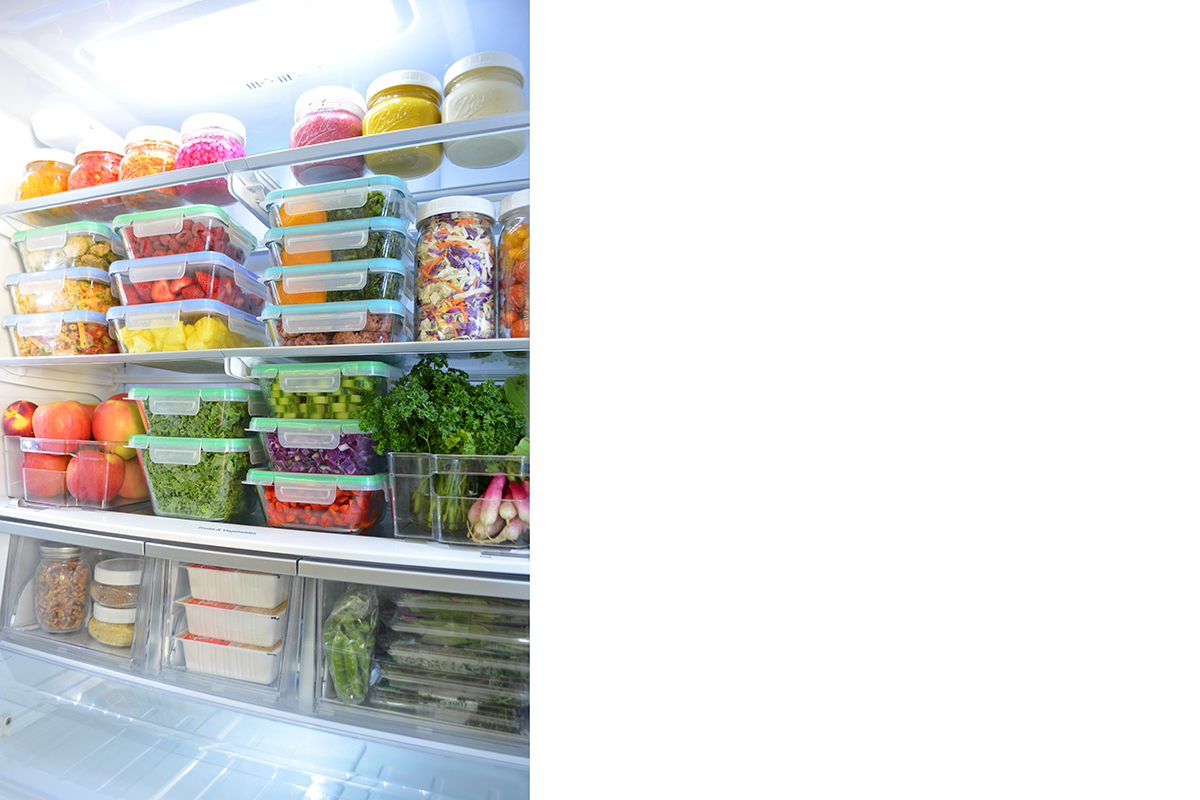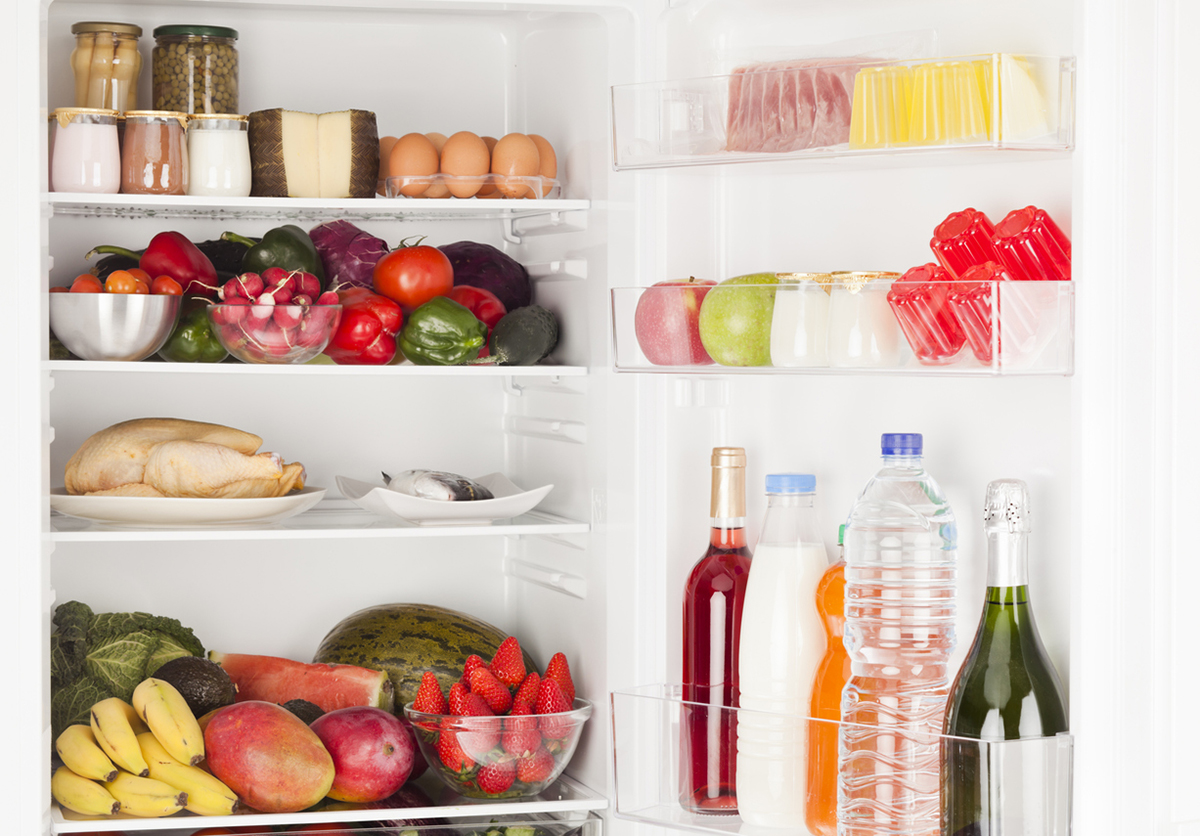Chucking your groceries into the fridge is not enough to keep them fresh and tasty. To prolong the life of your produce, storing it on the correct shelves is a must. From temperature differences to cross-contamination, there is much to keep in mind. But worry not, we’ve got you covered! Here are six easy steps to organising your fridge.
- Make room
If you haven’t organised your fridge in some time, the prospect can be daunting. The key is to take it one step at a time, the first one being the big clear-out. Empty your fridge entirely, and organise things into categorised piles, such as meats, dairy, snacks, veggies and fruits. If you come across expired foods, throw them out. Unwanted items that haven’t been opened and still have a long shelf-life can be gifted or even donated.
Image courtesy of @breathing.room.organization
- Clean up
Once your fridge is empty, the accumulation of dirt and mildew inside will become more noticeable. This is a prime opportunity to clean your fridge thoroughly. However, don’t reach for kitchen cleaners, as they might come in contact with food later on and have a negative impact on your health. Instead, keep it simple with warm water and soap, gently wiping down the inside of your fridge. Repeat the process with dry wipes in order to avoid condensation. To do your future self a favour, line the bottom of your crisper drawers with paper towels to keep them clean longer and absorb moisture.
Image courtesy of @organizedlifedesign
- Keep food cool
Make sure to keep your items cool during your clear-out. Don’t pile them in an area exposed to sunlight, and, if possible, turn up the air-con in the room. Clear and clean your freezer either first or last, putting frozen foods back into their space as quickly as possible to avoid thawing. If cleaning your freezer looks like it’s going to take some time, consider storing frozen items inside a cooler box in the meantime. - Stack and stash
Now that your fridge is spick and span, it’s time to organise food in containers. Save for fruits and leafy produce that should not be sealed away as moisture causes them to rot faster (tip: they do best in the crisper drawer), all other foods can go in boxes. A safe choice for fridge storage is air-tight glass containers as they are easy to clean and don’t absorb stains and odours. As far as shapes go, square and rectangular containers fit nicely into the corners of your fridge and don’t leave awkward gaps. For the freezer, you may also want to consider storing foods flat in freezer bags to save space, enable faster thawing and prevent freezer burn. Finish off the process by labelling your containers and reusing them for the same types of food in the future.
Image courtesy of @hellonutritarian
- Know your fridge
While some general rules apply to the overall fridge, such as moving new items to the back in order to use up the older ones first, there are some temperature differences between each shelf that will impact your storage. For instance, the top shelf has the most consistent temperature, making it a good place to store ready-to-eat items. The middle shelf should be kept for dairy and eggs, and the coldest bottom shelf for meats, stored separately to avoid cross-contamination. The doors of the fridge are warmer than the rest, maintaining juice and sauces but allowing milk to go sour.
- Think outside the box
Storage is ultimately about your own needs. As such, you need to be creative with how you arrange things in your fridge. If you have a lot of vertical space, use it to hang up clear baskets or tiered racks for extra storage. If you cannot seem to avoid bulky sauce jars and drinks blocking your view of smaller foods, invest in a rotating container for those tall items. As long as it keeps things tidy and fresh, you’re good to go.



